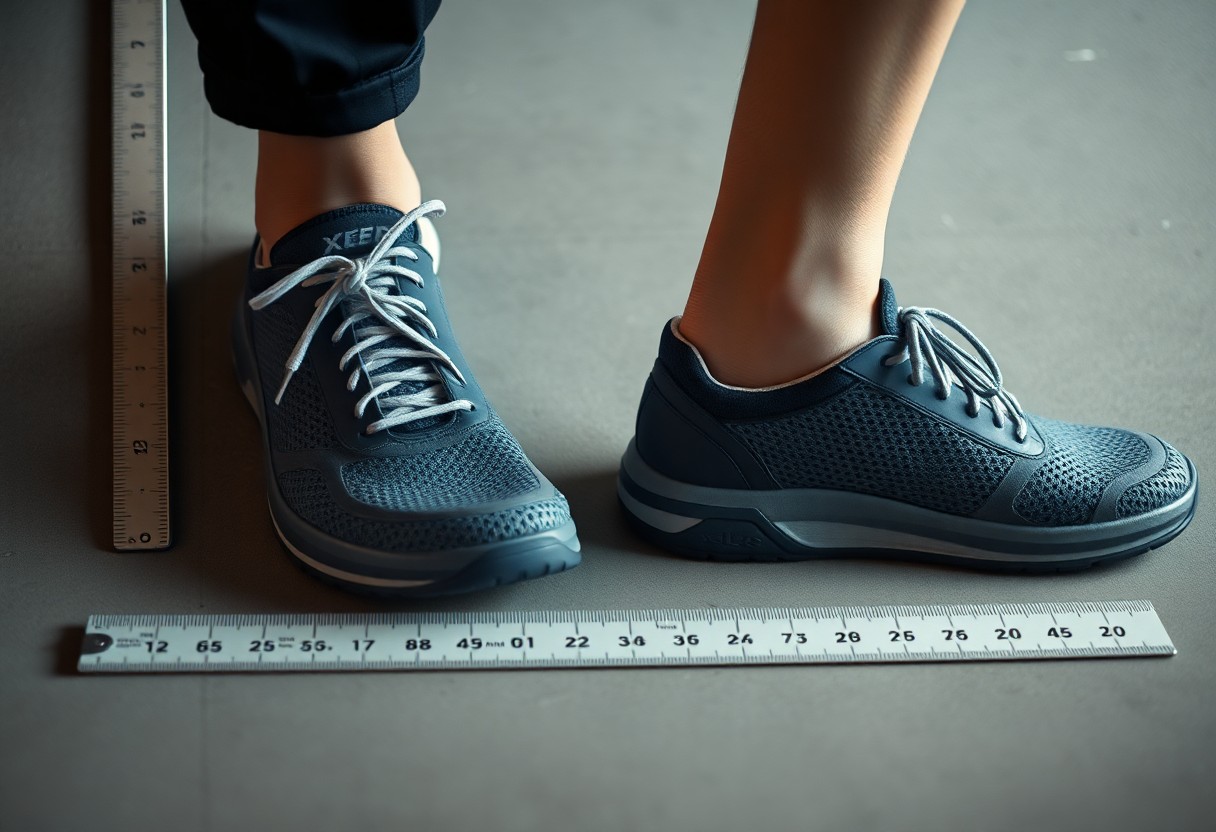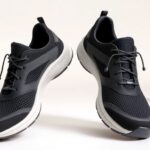
Selecting the ideal footwear is paramount, and understanding size is essential, particularly when it comes to Xero Shoes. To ensure you make the best choice for your feet, it is important to delve into how Xero Shoes fit, comprehend the specifications of their toe box dimensions, and recognise the potential impact of fitting discrepancies. Such knowledge is crucial for your comfort and maintaining optimal foot health. Research indicates that numerous individuals, particularly those with specific foot conditions, may find wider options beneficial. Thus, assessing how Xero Shoes adapt to your unique foot shape is vital. This comprehensive analysis will clarify the nuances of sizing, empowering you to make an educated choice for your feet.

Discovering User Expectations for an Ideal Fit with Xero Shoes
When investigating Xero Shoes, potential buyers commonly expect a fit that promotes natural foot movement while allowing sufficient space for toe splay. Many individuals seek footwear that accommodates the unique shapes of their feet, particularly if they have wider feet or elevated arches. Achieving a comfortable fit is pivotal, as it can enhance overall performance considerably and reduce the likelihood of developing blisters or discomfort during extended wear. By understanding what constitutes an ideal fit, users can select shoes that not only meet their aesthetic preferences but also support their physical activities effectively.
Clarifying Common Misconceptions About Fit in Xero Shoes
Misunderstandings about the fit of Xero Shoes are widespread. Some users mistakenly believe that these shoes are exclusively suitable for narrow feet, while in reality, they boast a wider toe box designed to foster natural toe splay. Confusion often arises regarding sizing, as many wonder if they should choose a size larger or smaller compared to their usual footwear. This ambiguity can lead to frustration when attempting to find the best-fitting shoes, making it imperative to clarify these misconceptions to ensure a more informed purchasing decision.
In-Depth Review of User Experiences Regarding Fit and Comfort
Feedback from users of Xero Shoes frequently highlights a mix of satisfaction and challenges related to sizing. A notable number of users praise the shoes for their generous toe box and overall comfort, especially when transitioning from conventional footwear. Nonetheless, some express concerns over sizing inconsistencies, particularly with certain models like the Mesa Trail, where an 18% mismatch in sizing has been reported. This discrepancy is largely attributed to variations in arch height, which can significantly affect how the shoes fit different foot types. Understanding these experiences can guide potential buyers in making more informed decisions about which model might be the best fit for their individual needs.
Further examination of user reviews reveals specific fit experiences. Customers frequently note the enhanced mobility and stability offered by Xero Shoes, particularly on uneven surfaces, supported by studies indicating an 11% increase in toe movement compared to traditional footwear. However, varying foot shapes can lead to different perceptions of fit, highlighting the importance of knowing your specific foot dimensions when choosing the ideal Xero Shoes for your activities. This awareness can ultimately lead to a more satisfying footwear experience.
Understanding Foot Anatomy: How Width and Sizing Variability Affect Fit
The intricacies of your foot anatomy play an essential role in determining the appropriate shoe size and fit, especially with specialised footwear like Xero Shoes. Variations in width, particularly within the toe box, can significantly affect both comfort and performance. Recognising how Xero Shoes accommodate these foot width variations enables you to make well-informed choices regarding your footwear selections. Understanding your foot's unique structure can greatly enhance your overall satisfaction with your shoes.
A Closer Look at Foot Anthropometry: Important Comparative Findings
A study involving 212 men diagnosed with diabetes demonstrated that the average forefoot width in these individuals was 4.5 mm wider than that of healthy subjects. This finding underscores the need for broader toe boxes in therapeutic footwear, prompting brands like Xero Shoes to consider these anatomical variations in their designs. By accommodating a wider range of foot shapes, Xero Shoes can better serve individuals with specific foot health needs.
Highlighting Sizing Discrepancies Across Xero Shoe Models
| Key Findings | Description |
|---|---|
| Width Requirements | Individuals with diabetes generally require a wider toe box, which influences their fit in Xero Shoes. |
| Toe Movement | Xero Shoes facilitate an 11% increase in toe splay compared to traditional footwear. |
| Model Consistency | 18% of reviews for the Mesa Trail model indicated inconsistencies in sizing. |
Examining Sizing Inconsistencies Across Different Xero Shoe Models
Inconsistencies in sizing across various Xero models can notably affect your overall satisfaction and fit. A review of 150 testimonials on Reddit revealed an 18% discrepancy in sizing for the Mesa Trail model. Many users attributed this to variations in instep height, suggesting that while the overall design aims for a more flexible fit, individual foot shapes can lead to unexpected sizing outcomes. Exploring user experiences can provide valuable insights, guiding you toward a pair that aligns with your specific foot profile and preferences.

Maximising Comfort and Performance Through Optimal Toe Splay
The ability for your toes to splay appropriately is a critical factor that enhances your overall comfort and performance in Xero Shoes. Proper toe alignment not only supports improved balance but also allows for efficient power transfer with every step. In contrast, traditional footwear often restricts toe movement, which can hinder your natural gait and negatively impact your foot health. Understanding how toe splay interacts with your footwear selection is essential for enhancing your walking or running experience, ensuring lasting comfort throughout your activities.
Examining Toe Movement in Minimalist Footwear Designs
Minimalist footwear, such as Xero Shoes, is designed to allow your toes to move freely and spread naturally. This unrestricted movement is vital as it promotes better biomechanics and facilitates full engagement of your foot muscles. Unlike traditional shoes that limit toe splay, minimalist designs offer a wider toe box, ultimately improving your foot’s natural function and comfort during various physical activities. Embracing this design philosophy can lead to improved performance and reduced discomfort over time.
Evaluating the Impact of Xero Shoes on Toe Splay Efficiency
Research suggests that Xero Shoes can significantly improve toe splay efficiency, providing approximately 11% greater toe mobility compared to conventional hiking footwear. This increased mobility contributes to enhanced stability and adaptability on uneven surfaces, making your movements more dynamic and responsive. In the context of hiking or trail running, this enhanced toe splay can greatly influence your performance, enabling more effective weight distribution and grip on diverse terrains. This functionality helps to prevent blisters and improves balance, allowing you to navigate trails with greater confidence and reduced fatigue.
Aligning Shoe Sizing with Your Unique Physiological Needs
To align your shoe sizing with your physiological needs, it is crucial to have a comprehensive understanding of individual foot shapes and dynamics. Research indicates a 4.5 mm increase in forefoot width among individuals with diabetes, demonstrating that many users may require wider toe boxes for optimal comfort and functionality. A proper fit takes into consideration not only length but also the natural splay of your toes. This understanding drives brands like Xero Shoes to refine their sizing methodologies, ensuring better alignment of footwear with a variety of foot structures.
Consumer Recommendations Based on Individual Foot Structure
Understanding your foot structure is vital when selecting Xero Shoes. If you have a wider foot or a high arch, you may want to consider opting for a larger size or exploring models known for their broader toe boxes. Regularly measuring your foot’s width and length can significantly facilitate the selection of the best fit. Additionally, custom orthotics may enhance your overall experience by providing personalised support that complements the shoe’s design, ultimately leading to improved comfort and performance.
Utilising Consumer Feedback to Drive Design Enhancements
Consumer feedback is instrumental in driving design improvements within the Xero Shoes lineup. By meticulously analysing reviews and fit issues reported by users, the brand has successfully implemented significant changes. This includes widening the toe boxes and addressing sizing discrepancies noted in models like the Mesa Trail, ensuring that feedback translates into better-fitting options for future releases. Recent modifications based on user feedback include increasing the toe box space to better accommodate a diverse range of forefoot widths, addressing the 18% sizing discrepancy found in customer reviews. This commitment to understanding consumer needs guarantees that you find a shoe that feels custom-made for your individual requirements, enhancing both comfort and performance.

Imagining the Future of Footwear Sizing and Design Innovations
The evolution of shoe sizing and design is increasingly oriented towards inclusivity and personalisation, highlighting the necessity of accommodating a wide spectrum of foot shapes and sizes. Innovations in materials and construction techniques are enabling brands to create footwear that not only fits well but also enhances overall performance and comfort. As consumer expectations continue to evolve, manufacturers are placing emphasis on bridging the gap between traditional sizing standards and the unique anthropometric needs of their users.
Innovative Strategies for Footwear Fit: Satisfying Consumer Demands
Customisable features and wider toe boxes are becoming increasingly common among footwear brands, particularly in response to consumer feedback regarding comfort and fit. As studies reveal that individuals often require additional room in the toe area, especially those with wider feet, brands such as Xero Shoes are adjusting their designs to meet these specific requirements. This shift not only enhances user satisfaction but also promotes foot health by allowing for natural toe splay during movement, leading to better overall comfort and performance.
Harnessing Technology for Tailored Shoe Solutions
Technological advancements play a crucial role in achieving personalised shoe solutions. Innovations like 3D foot scanning enable consumers to receive highly tailored recommendations based on their unique foot dimensions, resulting in improved fit accuracy. This is particularly significant as even minor misalignments in shoe fit can lead to discomfort or injury. 3D foot scanning technologies precisely capture the unique contours of your foot, revealing specific measurement variations often overlooked by traditional sizing methods. Brands are increasingly using this data to create shoes that conform to your individual profile rather than adhering to a one-size-fits-all approach. Moreover, virtual fitting technologies can simulate how various models will fit, simplifying the process of selecting shoes that cater not only to your foot shape but also to your activity level and preferences. Consequently, the footwear industry is progressing toward a future where you can experience unparalleled comfort and support tailored specifically to your needs.
Essential Insights on Xero Shoes Fit and Sizing
In light of this discussion, it is crucial to recognise that Xero Shoes may fit differently for you compared to traditional footwear due to variations in toe box dimensions and sizing discrepancies. Research highlights that a wider toe splay is beneficial for maintaining foot health, especially for individuals with specific conditions such as diabetes. Given that many users have shared mixed experiences regarding sizing, it becomes vital to assess your foot's width and height to determine the best fit for your unique requirements. Taking the time to understand your feet will ensure you make a well-informed purchase that meets your personal comfort and performance needs.
The Article Are Xero Shoes True to Size? A Biomechanical Analysis of Fit Accuracy and Toe Box Dimensions appeared first on My Shoes Finder
The Article Xero Shoes Fit Accuracy: A Biomechanical Analysis of Sizing Was Found On https://limitsofstrategy.com







